
Understanding the Anatomy of a Ring: Key Parts Explained
At Nature Sparkle, we believe that an engagement ring is more than just a piece of jewelry; it’s a timeless symbol of love, commitment, and personal style. To help you make an informed choice, we’ve crafted this in-depth guide on the anatomy of a ring. Understanding the key parts of an engagement ring will not only help you describe your preferences more effectively but also ensure that you find the perfect ring that aligns with your vision. Whether you’re looking to buy engagement rings, explore the best diamond ring settings, or understand ring part names, this guide is for you.
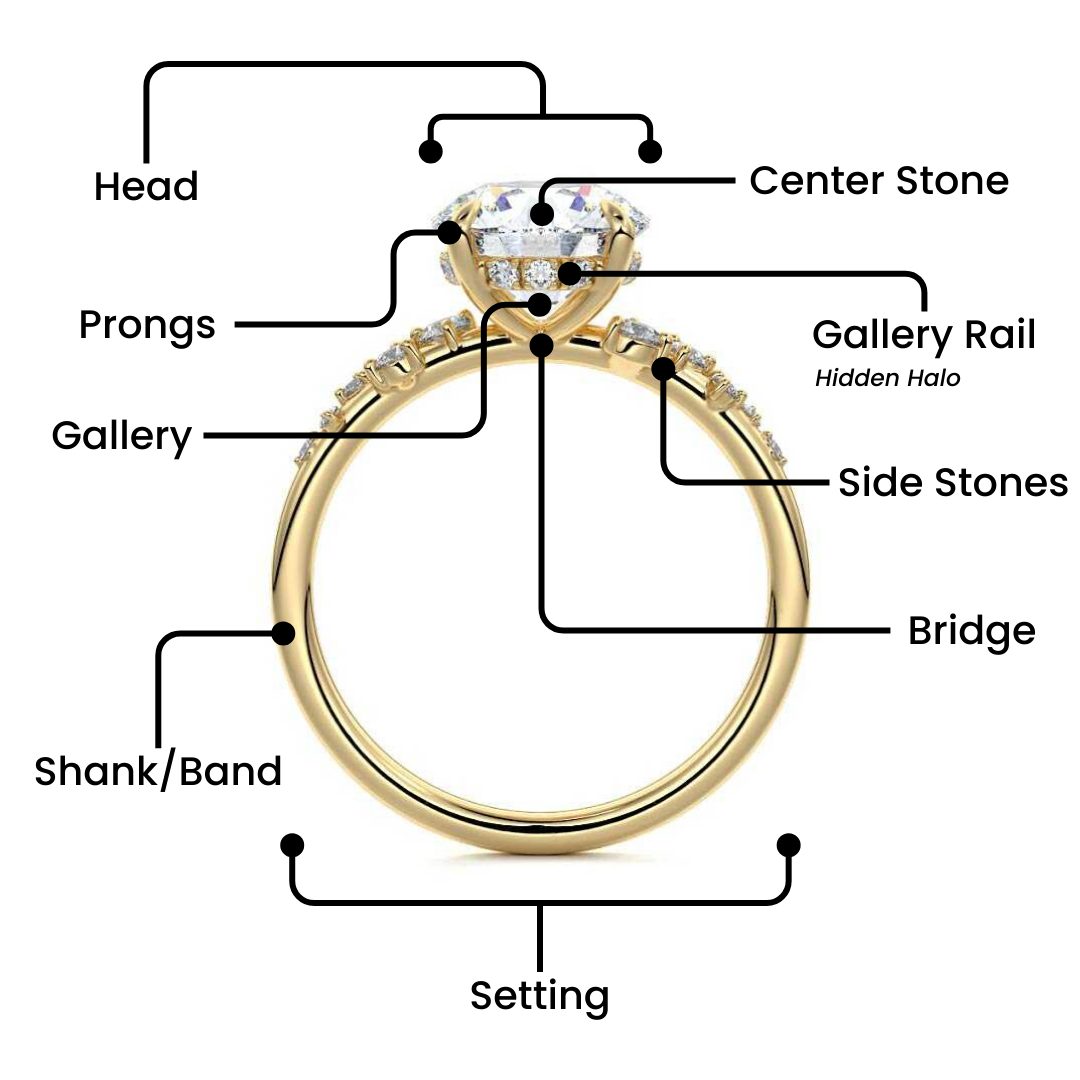
1. The Center Stone: The Heart of the Ring
The centerpiece of any engagement ring is the center stone—the most eye-catching element. This is the focal point, chosen based on personal preference, budget, and style.
Common diamond shapes for center stones include:
- Round: A classic and timeless choice known for its brilliance.
- Oval: Elegant and elongated, creating a flattering look.
- Cushion: Soft edges with a vintage appeal.
- Princess: A modern, square-shaped cut with clean lines.
- Emerald: A rectangular cut with a sophisticated step-cut faceting.
- Marquise: A unique boat-shaped diamond that elongates the finger.
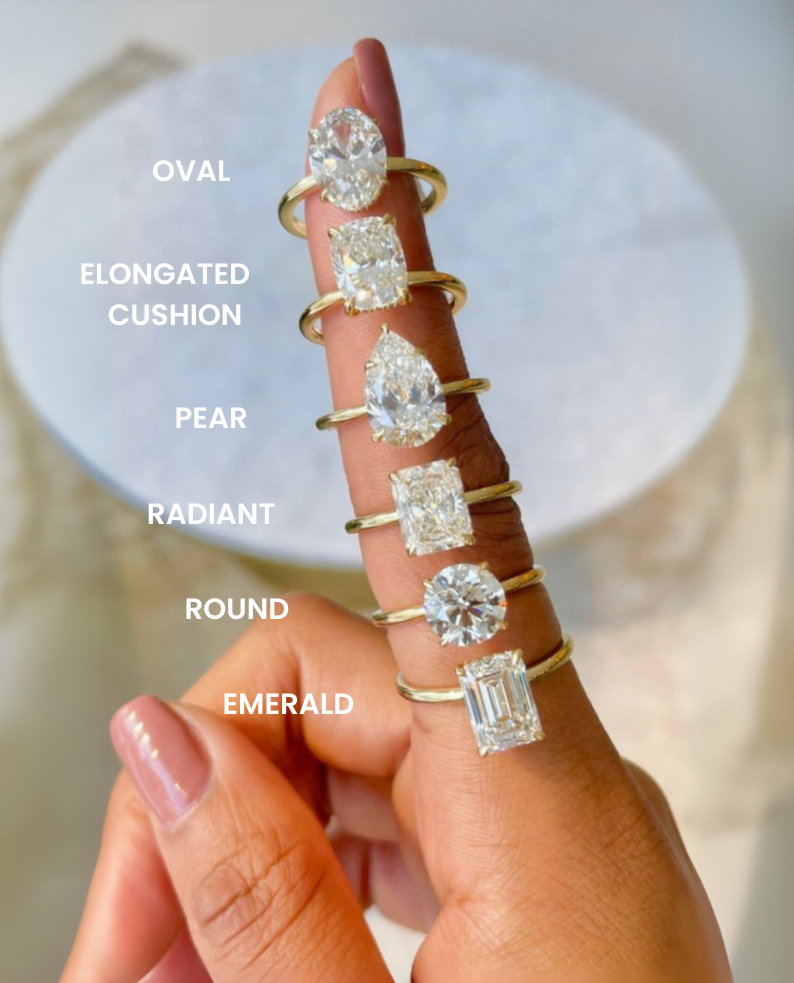
At Nature Sparkle, we offer an unparalleled selection of ethically sourced diamonds and gemstones, allowing you to find the perfect match for your dream ring.
2. The Setting: Holding the Center Stone in Place
The setting refers to how the center stone is mounted onto the ring. It plays a crucial role in the ring’s appearance, durability, and overall aesthetic. Popular setting styles include:
- Solitaire: A single diamond set on a plain band, emphasizing the stone’s brilliance.

- Halo: A circle of smaller diamonds surrounding the center stone for added sparkle.
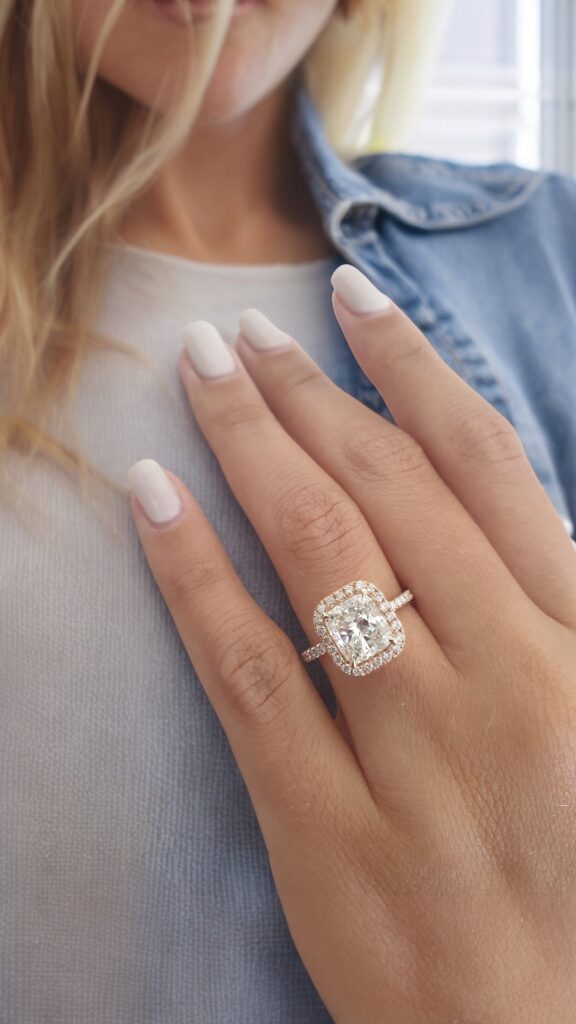
- Three-Stone: A center diamond flanked by two smaller stones, symbolizing past, present, and future.
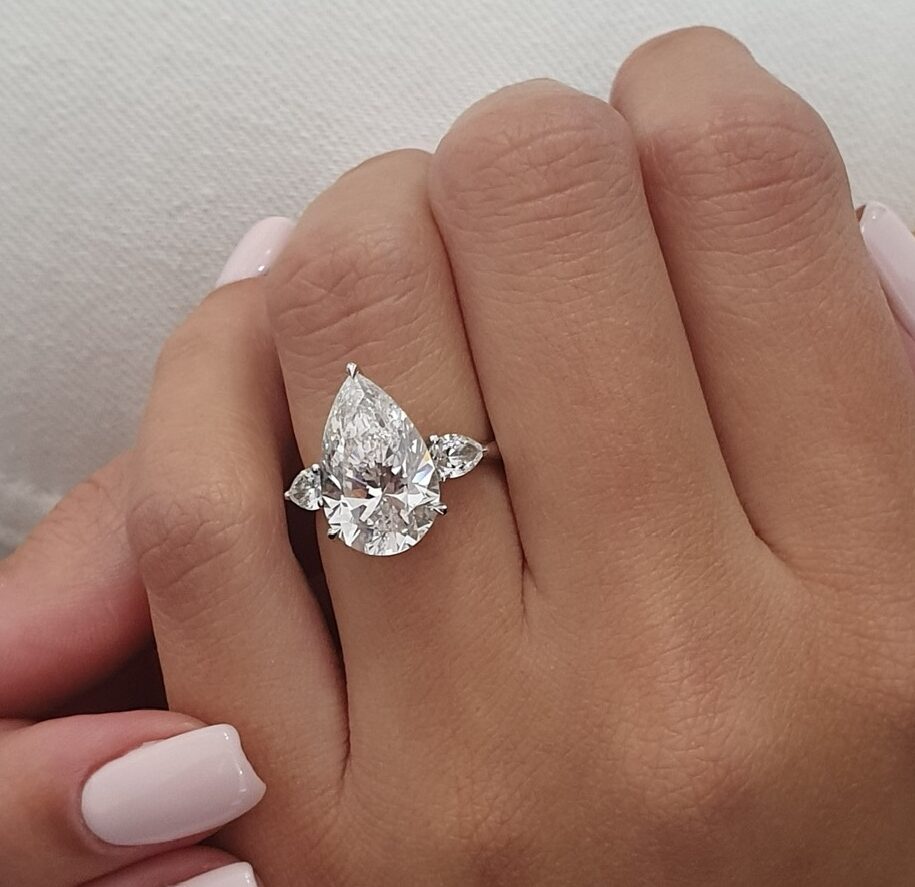
- Bezel: The stone is encased in metal, offering a sleek and modern look.
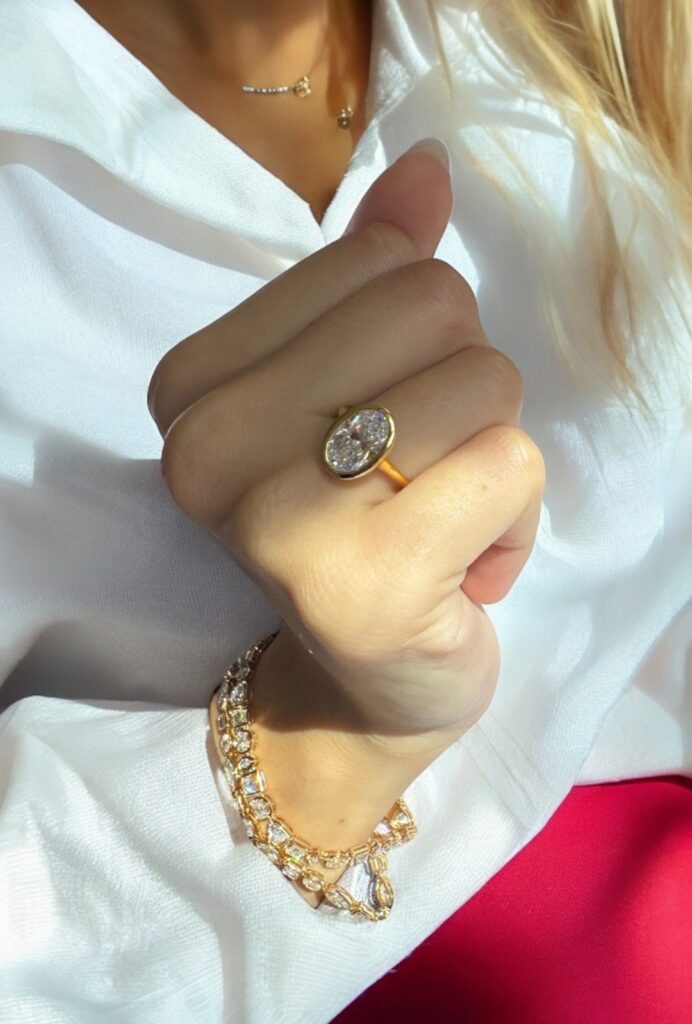
- Pavé: Tiny diamonds embedded in the band for extra shimmer.
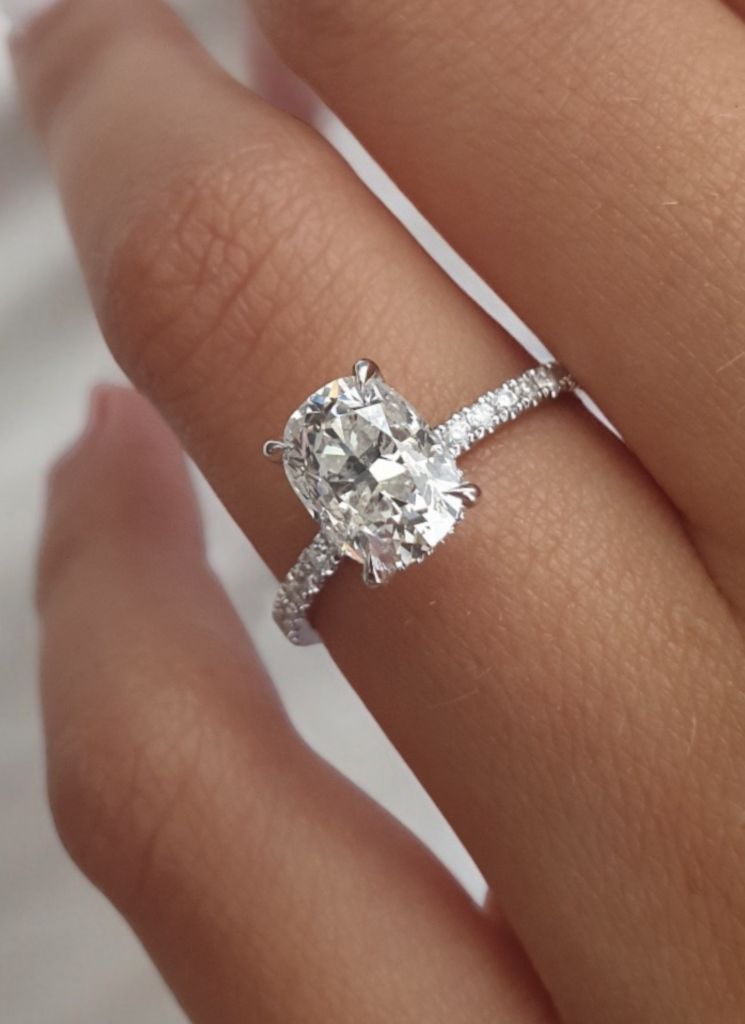
- Hidden Accent: Diamonds are placed under the main stone, adding sparkle from all angles.
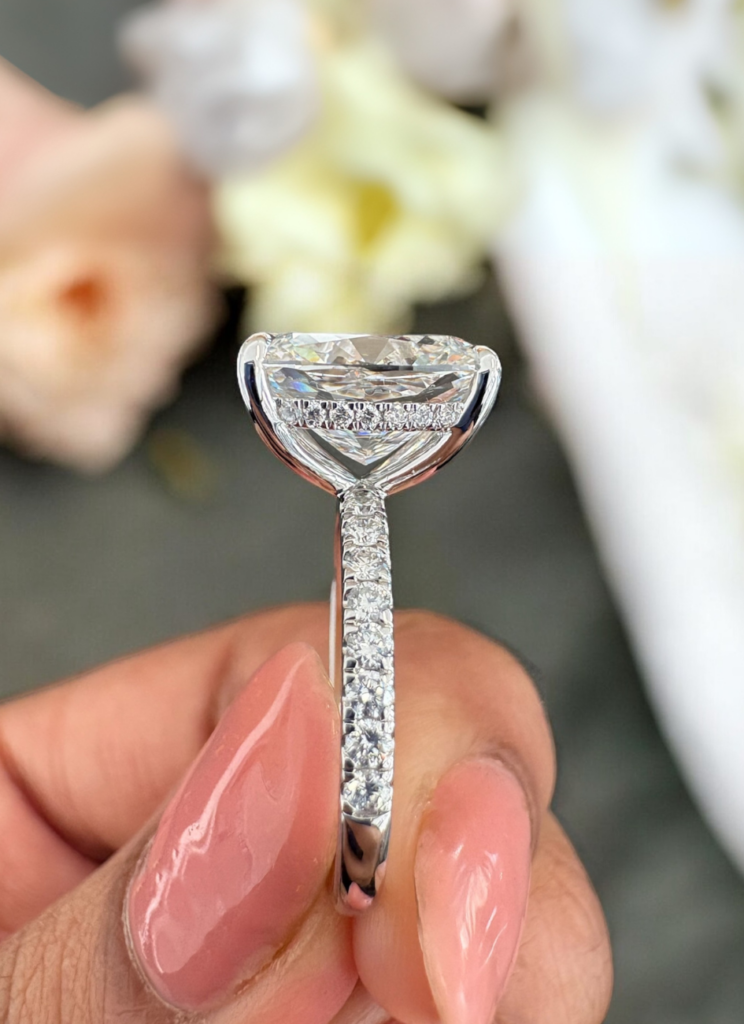
Choosing the right setting enhances the overall engagement ring structure, ensuring both style and security for your gemstone.
3. The Head: Securing the Center Stone
The head of the ring is the component that holds the center stone in place. It consists of two key parts:
- Prongs: Small metal tips that grip the diamond securely. They come in claw, bead, or V-shaped designs.
- Gallery: The underside of the head, often featuring intricate details or hidden diamond accents for added elegance.
For example, our Marika engagement ring features a hidden halo in the gallery, enhancing the brilliance of the center stone with a delicate yet striking effect.
4. The Bridge: Providing Support and Design Flair
The bridge is located underneath the head, resting against the finger. It serves both structural and decorative purposes. Some engagement rings incorporate accent stones or milgrain details on the bridge, enhancing the overall aesthetic appeal.
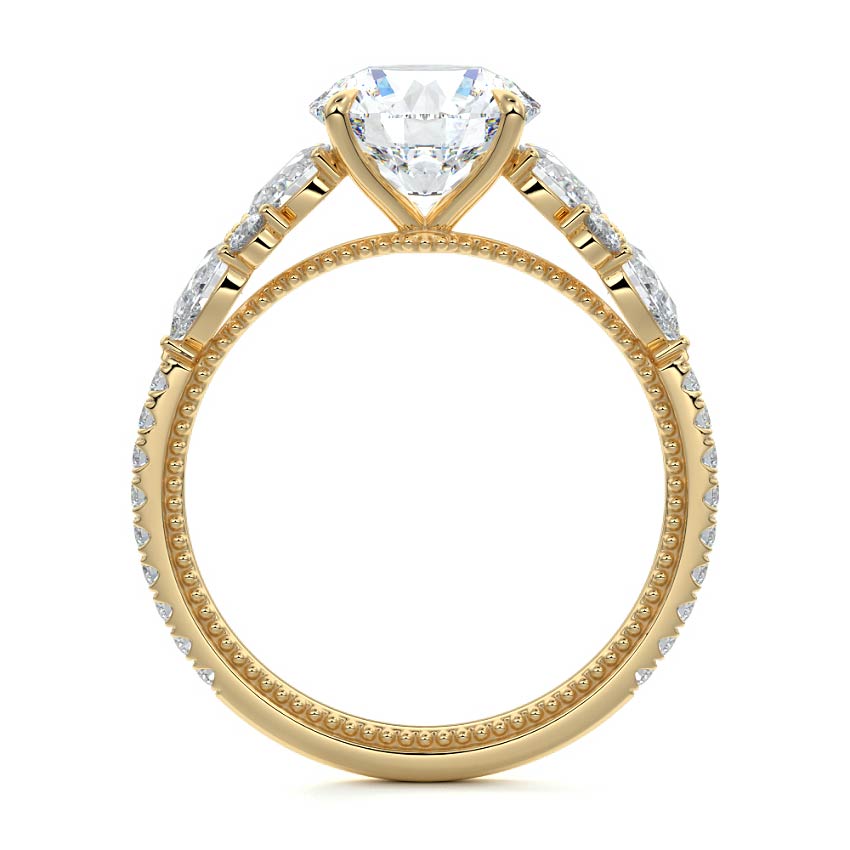
5. The Shoulders: Connecting the Center Stone to the Band
The shoulders are the upper parts of the ring that extend from the center stone toward the shank. They can be adorned with:
- Plain metal for a minimalist look
- Pavé diamonds for added sparkle
- Engraved details for a vintage-inspired touch
Our Jaya engagement ring features shoulders that gracefully extend into a floral pattern, creating a harmonious and captivating visual effect.
6. The Shank: The Band That Encircles the Finger
The shank, commonly referred to as the band, is the metal portion of the ring that wraps around the finger. There are several types of shanks to consider:
- Classic Straight Shank: A simple, traditional design.
- Split Shank: The band splits near the center stone for a modern look.
- Tapered Shank: The band narrows as it approaches the center stone, enhancing its prominence.
- Twisted Shank: A woven design that adds a romantic and unique touch.
For example, our Tiziana engagement ring features a bold and chunky band, providing a contemporary yet timeless look.

7. The Sizing Area: Ensuring the Perfect Fit
The sizing area is located at the bottom of the shank, allowing the ring to be resized if needed. Proper sizing is essential for comfort and security, ensuring your ring fits perfectly for a lifetime.
Choosing the Perfect Engagement Ring
Understanding ring anatomy helps you make informed decisions when customizing your engagement ring. At Nature Sparkle, we provide a personalized design process, allowing you to select your ideal center stone and customize every detail of your setting.
Our Promise to You:
- Quality & Craftsmanship: Each ring is crafted with precision and care.
- Transparency & Education: We provide clear, accessible information at every step.
- Sustainability: Our sourcing practices uphold ethical standards.
- Customer-Centric Support: From consultation to post-purchase care, we’re here to guide you.
Explore our collection today and create a ring that tells your love story beautifully.